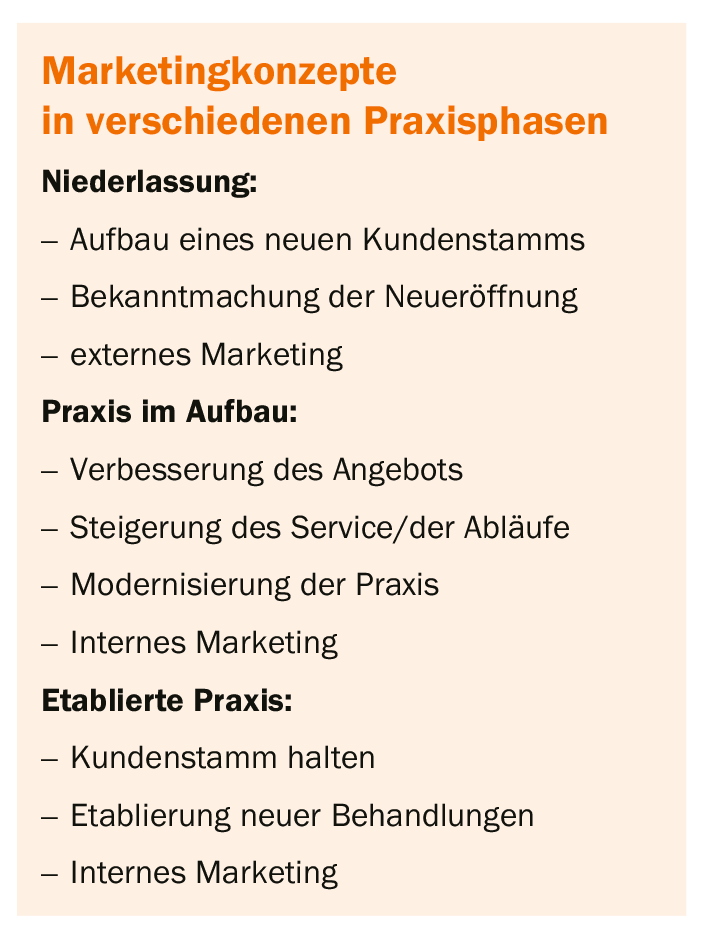For every current or future practice owner, the question sooner or later arises as to which marketing strategies are up-to-date and promising. A differentiated discussion is worthwhile.
A homepage is one of the “must haves” of marketing measures, so far so good. This is a digital business card, whereby attention must be paid to a needs-oriented concept (“responsive design”) and optimized recognition in search engines (SEO analysis). In addition, conventional internal practice advertising (brochures, waiting room TV, etc.) is also still an indispensable marketing method. Social media, on the other hand, is becoming increasingly important. Currently, electronic newsletters and/or Internet presence in the form of weblog, Facebook, Instagram, YouTube channel, etc. are not yet absolutely necessary, but “nice to have”. This also applies to digital tools such as practice apps or online appointment scheduling.

The founder of the “Aggregation of Marginal gains” theory, Sir Dave Brailsford, who was a very successful coach of various cycling teams, put forward the thesis that continuous optimization in small steps is a sustainable concept for success. In the period from 2011 to 2017, he won a large number of competitions with his cycling team. “Aggregation of Marginal gains” means focusing on small improvements, in the form of increases of 1% magnitude. Effective factors here are: continuous learning, continuous improvement, commitment, ownership/entrepreneurship, responsibility. In contrast to rigorous immediate changes, medium and longer-term positive effects can be achieved without provoking unnecessary turmoil. Part of this concept is, among other things, continuous measurement and monitoring of success-relevant parameters, whereby not only person-related but also environment-related aspects (e.g. technical infrastructure) should be taken into account. This theory is suitable, for example, to overcome a phase of stagnation in a company. An important step in achieving marginal change is to define a specific set of measures. This can be formulated using a 10-point plan:
- Answer phone calls after 3× ring
- Waiting time less than 10 minutes: Notification by sms if appointment is delayed
- Ambience at the reception and in the consulting room: make it as pleasant as possible
- Additional chair in the consulting room
- Practical vision: everyone in the team should be pulling in the same direction
- Appearance of physician and staff (“corporate identity”, e.g. uniform clothing)
- Knowledge about the practice clientele
- Take away fear: e.g. address openly
- Examination: taking time for the patient
- Make sure that all questions are answered each time
InFo NEUROLOGY & PSYCHIATRY 2020; 18(3): 48.











